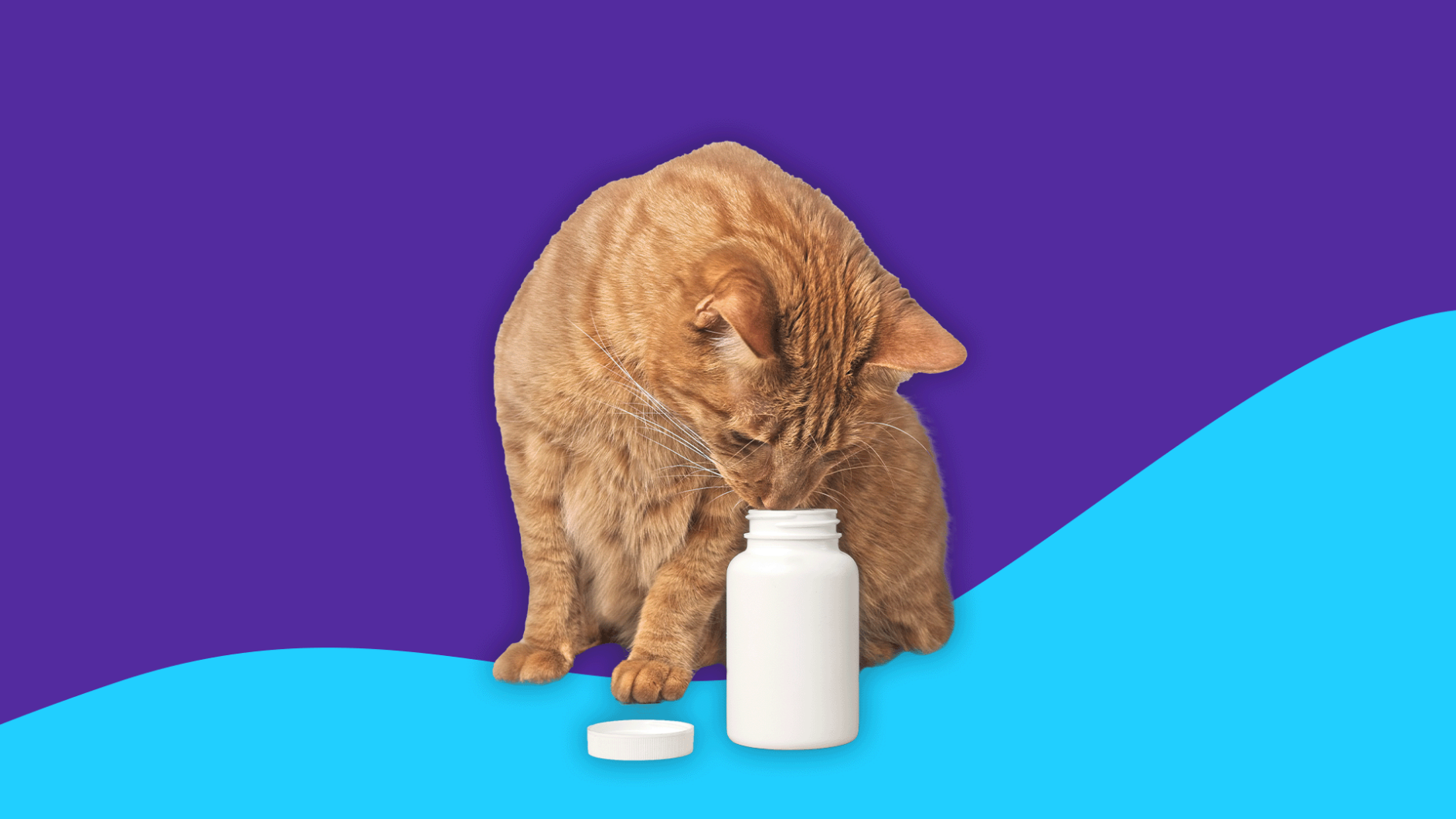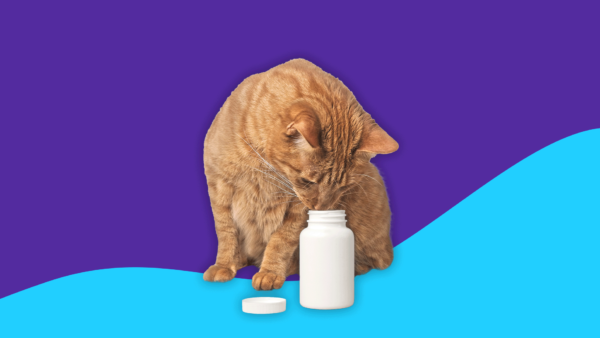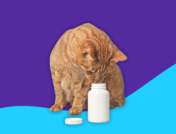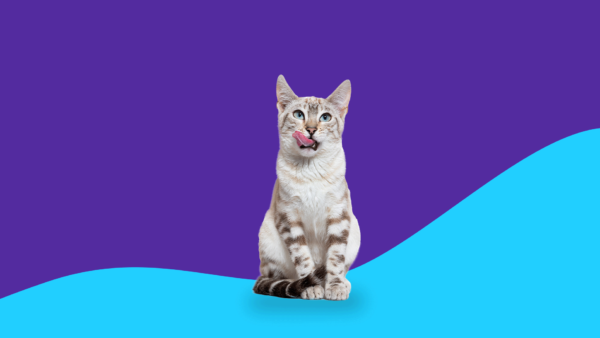Key takeaways
Amoxicillin is a penicillin antibiotic used l in veterinary medicine to treat bacterial infections in cats.
The standard dosage of amoxicillin for cats is 11-22 mg/kg once every 24 hours.
Amoxicillin has very few interactions with other medications.
Veterinarians recommend pet parents administer amoxicillin once or twice a day. If given without food, it may cause stomach upset.
If you miss giving your cat a dose, do not double up. Double-dosing amoxicillin may cause an overdose or other adverse reactions.
Amoxicillin (brand names Amoxil, Amoxicot, and Moxilin) is a gram-positive penicillin antibiotic approved by the U.S. Food and Drug Administration (FDA) to treat certain bacterial infections, including Streptococcus, Staphylococcus, and E.coli. Amoxicillin comes in capsules, pills (Amoxi-Tabs), chewable tablets, and a liquid (Amoxi-Drop) taken by mouth.
“Amoxicillin can be used to treat various bacterial infections in cats, including respiratory infections, urinary tract infections (cystitis), skin infections, ear infections, and soft tissue infections,” says Georgia Ushi, DVM of PetHealthLove based in Tampa, Florida. Dr. Ushi also states that “According to Plumb’s Veterinary Drug Formulary, the standard dosage of amoxicillin for cats is typically 5 to 10 mg per pound (10 to 20 mg/kg) of body weight, administered orally every 12 to 24 hours.”
Amoxicillin dosage for cats
“The exact dosage of amoxicillin can vary depending on the type of infection and the cat’s health condition,” Dr. Ushi says.
Below are the standard dosages for amoxicillin when treating susceptible bacterial infections according to Plumb’s Veterinary Drug Handbook:
- Urinary tract infection (UTI): 11-15 mg/kg every 8-12 hours
- Upper respiratory tract infection: 11-22 mg/kg once daily
- Skin and soft tissue infections: 11-22mg/kg once daily
- Gastrointestinal tract infections: 11-22mg/kg once daily
Typically, amoxicillin is not a long-term drug for felines. However, the length of time varies depending on the cat’s health conditions. A cat’s body weight can also significantly affect the amount of amoxicillin the veterinarian prescribes. “In general, dosing ranges from 5-7 days, but, again, the overall length of treatment is dictated by the condition being treated,” says Doug Mader, MS, DVM, a triple board-certified veterinary specialist and the author of The Vet at Noah’s Ark of Big Pine, Florida. “In some unique cases, treatment may last several months.” For example, treatment may last 10 to 14 days or longer for cats with UTIs.
It is important to note that pet owners should not administer amoxicillin for more than 30 days without a veterinarian’s approval, as extended use of amoxicillin may cause unpleasant side effects in cats. “Using antibiotics for too long in cats can disrupt the balance of good bacteria in their stomachs, leading to gastrointestinal issues such as diarrhea, vomiting, or stomach upset,” Dr. Ushi says.
RELATED: Amoxicillin for cats: Dosage and Safety
How much amoxicillin can I give my cat?
As Dr. Ushi mentioned, the standard dosage of amoxicillin for cats is 10-20 mg/kg every 24 hours.
The dosage of amoxicillin for cats is calculated according to their body weight. You’ll want to confirm the correct dosage with your veterinarian before administering amoxicillin. “It is always best to consult your veterinarian for the appropriate dose needed for your cat’s current situation,” Dr. Mader says.
Does amoxicillin interact with any other cat medications?
Amoxicillin has only a few drug interactions. These include some antibiotics and Methotrexate.
Macrolide antibiotics, sulfa antibiotics, and tetracyclines are antibiotics that treat bacterial infections by stopping the growth of bacteria. Lab models have shown a possible reduction in efficacy when these antibiotics are used with amoxicillin. However, the evidence is still not clear if this effect occurs in our pet’s bodies.
Methotrexate is an antineoplastic drug that acts as an immunosuppressant, slowing the body’s immune system and reducing swelling or inflammation. A veterinarian may prescribe methotrexate to treat feline lymphoma, a type of cancer.
According to a case report involving a human, taking high doses of methotrexate and amoxicillin caused side effects like subacute toxicity with renal failure, myelosuppression (decrease in bone marrow activity), mucositis (inflammation of the mouth or gut), nausea, vomiting, fever, and skin changes.
In some instances, amoxicillin may not be safe for your cat. If your cat is allergic to penicillin or similar medicines, it’s recommended that they avoid this antibiotic. It’s also recommended that your cat takes medications or supplements, so please notify your licensed veterinarian before administering amoxicillin.
“Amoxicillin should be avoided in cats with a known allergy to penicillin or other beta-lactam antibiotics,” Dr. Ushi says. “Adverse effects to this medication are rare, but it could possibly cause signs of an allergic reaction like hives, itching, or a skin rash.”
If your cat displays signs of an allergic reaction, please seek medical attention immediately.
RELATED: When does your pet need antibiotics?
Guidelines for administering amoxicillin in cats
According to Dr. Ushi, amoxicillin is typically prescribed once or twice a day. “If the cat is difficult to medicate, a veterinarian will prescribe it just once a day so as not to stress the cat out too much,” she says.
Below are steps for giving oral amoxicillin to your cat at home:
- Gently hold the cat’s head from the top using your hand. If you’re right-handed, use your left hand.
- Tilt the cat’s head back, and your cat will open its lower jaw in response.
- Hold the amoxicillin pill or capsule with your dominant hand between the thumb and pointer finger. You can use an additional finger to keep the lower jaw open.
- Drop the pill or capsule as far back on the cat’s tongue as possible. Then, immediately close the mouth. You can encourage the cat to swallow by blowing on its nose or stroking your finger on its neck.
If you’re uncomfortable placing your fingers in your feline’s mouth, use a piling device instead.
If you’re using the oral suspension of the broad-spectrum antibiotic amoxicillin, you’ll squirt it into a pouch between their teeth and cheek using a syringe or liquid dropper. You can encourage them to swallow by blowing on their nose or stroking their neck.
You can contact your veterinarian if you have difficulty giving your cat amoxicillin.
“Amoxicillin may be given without food or around meal times, depending on the cat’s preference and any stomach upset that may occur,” Dr. Ushi says.
Be sure to monitor your cat for signs of stomach upset after they’ve taken amoxicillin.
“If your cat vomits after getting a pill, wait until the next scheduled dose and give it with food,” Dr. Mader says. “If it still vomits, advise your veterinarian, as switching to a different antibiotic may be necessary.”
However, Dr. Ushi doesn’t recommend mixing amoxicillin with food. “I discourage pet owners from mixing the medication with food because there is a good chance that the cat can smell it and will not eat the food,” she says. You can speak with your veterinarian for instructions and additional insight on giving food with amoxicillin to your cat.
You may forget to give your feline a dose of amoxicillin. If this happens, Dr. Ushi says to give the dose as soon as you remember. “However, if it’s almost time for the next scheduled dose, skip the missed dose and continue with the regular dosing schedule,” she says. “Do not double the dose to make up for the missed one.”
Doubling doses of amoxicillin can increase the risk of side effects in some instances. Side effects of amoxicillin overdose can include:
- Vomiting
- Drooling
- Loss of appetite
- Diarrhea
- Tremors
- Skin lesions
If you notice signs of amoxicillin overdose in your feline, seek immediate medical attention.
After stopping amoxicillin treatment at your veterinarian’s advisement, Dr. Mader says it can take about 24 hours to eliminate from your cat’s body. “The elimination half-life for amoxicillin is very short,” he says.
Certain health conditions may prolong the 24-hour elimination for some cats. “It could take longer with cats that have liver or kidney disease because it takes their system longer to break down the drug and excrete it,” Dr. Ushi says
Sources
- Amoxicillin, MedlinPlus (2023)
- Antimicrobial use guidelines for treatment of urinary tract disease in dogs and cats: Antimicrobial guidelines working group of the International Society for Companion Animal Infectious Diseases, Veterinary Medicine International (2011)
- Amoxicillin/clavulanate potassium drops: Amoxicillin and clavulanate potassium suspension, National Institutes of Health (2021)
- Calculating medication doses: A how-to guide for animal caregivers, The Open Sanctuary Project (2023)
- The use of aminoglycosides in animals within the EU: Development of resistance in animals and possible impact on human and animal health: A review, Journal of Antimicrobial Chemotherapy (2019)
- In vitro interaction of aminoglycosides with beta-lactam penicillins, Antimicrobial Agents and Chemotherapy (1985)
- Methotrexate (oral route), Mayo Clinic (2024)
- Lomustine, methotrexate and cytrabine chemotherapy as a rescu treatment for feline lymphoma, Journal of Feline Medicine and Surgery (2021)
- Pharmacokinetic interaction between high-dose methotrexate and amoxycillin, Therapeutic Drug Monitoring (1993)
- Safety of oral and intravenous mycophenolate mofetil in healthy cats, Journal of Feline Medicine and Surgery (2017)
- The magnitude and time course of changes in mycophenolic acid 12-hour predose levels during antibiotic therapy in mycophenolate mofetil-based renal transplantation, Therapeutic Drug Monitoring (2007)
- How do you give oral medications to a cat, Washington State University College of Veterinary Medicine (2021)
- Antibiotic overdose in pets, Pet Poison Helpline











